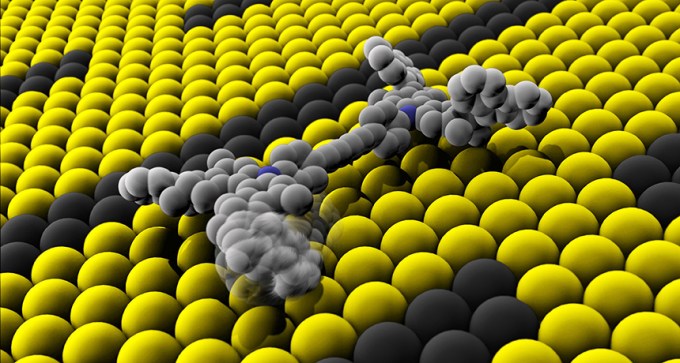Science News Magazine: Current Issue
Vol. 180 No. #13
Trustworthy journalism comes at a price.
Scientists and journalists share a core belief in questioning, observing and verifying to reach the truth. Science News reports on crucial research and discovery across science disciplines. We need your financial support to make it happen – every contribution makes a difference.
More Stories from the December 17, 2011 issue
-
 Life
LifeGene makes some pilots get rusty faster
A common DNA variant affects the pace of age-related decline in performance on skilled tasks like flying a plane.
-
 Life
LifeGiant dinosaurs may have migrated
Evidence in teeth suggests that sauropods sought greener pastures in dry North American summers.
By Nick Bascom -

-
 Earth
EarthPollution may be strengthening Asian cyclones
Sooty brown clouds may underlie the recent emergence of mega-storms striking from India to the Middle East.
By Janet Raloff -
 Paleontology
PaleontologyTooth stranger than fiction
A mammal fossil unearthed in South America resembles ‘Ice Age’ saber-toothed squirrel.
-
 Health & Medicine
Health & MedicineFirst brain image of a dream created
Feat opens the door to probing the stuff of nocturnal dramas.
-
 Life
LifePrehistoric horses came in leopard print
Dappled animals, once thought to be the result of selective breeding after domestication, were around when early humans depicted them on cave walls.
-
 Tech
TechTiniest car gets a test drive
Scientists build the world's tiniest electric 'roadster,' and zap it into action.
-
 Space
SpaceHow the moon got its magnetism
Earth’s tug or asteroid impacts may have generated the ancient lunar magnetic field.
By Nadia Drake -
 Humans
HumansFuture wars may be fought by synapses
Neuroscientists consider defense applications of recent insights into how the brain works.
-
 Health & Medicine
Health & MedicineChildhood sex abuse tied to heart risk
Women victimized as children or in adolescence have increased cardiac disease in adulthood, a study shows.
By Nathan Seppa -
 Health & Medicine
Health & MedicineHighlights from the American Heart Association Scientific Sessions
Vitamin D and heart disease, the effectiveness of external defibrillators, a shot to lower cholesterol, and more from the Orlando, Fla., meeting.
By Nathan Seppa -
 Chemistry
ChemistryPlastic isn’t over yet
A tough new form of the 20th century’s signature polymer could extend its usefulness and make it more recyclable.
-
 Space
SpaceLakes may lurk beneath chaos on Europa
Pockets of liquid water underlie fractured ice on the Jupiter moon’s surface, a new study concludes.
By Nadia Drake -
 Physics
PhysicsMetallic hydrogen makes its debut, maybe
German scientists claim to have squeezed the gas into a liquid that could have multiple applications.
By Devin Powell -

SN Online
EARTH Scientists get closer to knowing the exact makeup of Earth’s innards. Read “Oxygen a bit player in Earth’s outer core.” NASA GENES & CELLS A sense-mixing condition in which some people see smells or taste colors may have genetic roots. See “Unraveling synesthesia.” BODY & BRAIN An illusion that tricks people into thinking a […]
By Science News -

Science Future for December 17, 2011
January 1 Last day of the “Science of Gingerbread” exhibit at the Discovery Science Center in Santa Ana, Calif. See bit.ly/SNginger January 22 Last day to visit an exhibit on race at the Museum of Life and Science in Durham, N.C. See bit.ly/SNrace January 31 Deadline for entries in the 2012 Neuro Film Festival to […]
By Science News -

Science Past from the issue of December 16, 1961
HORMONES AFFECT NERVES — Add sex hormones to all the other things that can make you feel depressed on some days and elated on others. Evidence that sex hormones can affect the body’s central nervous system in roles unrelated to sexual functions has been reported by physiologists at the University of California, Berkeley. The findings […]
By Science News -

How We See the Sky: A Naked-Eye Tour of Day and Night by Thomas Hockey
Learn to see more when you look up with this naked-eye guide to the day and night skies. Univ. of Chicago Press, 2011, 239 p., $20
By Science News -

Thinking, Fast and Slow by Daniel Kahneman
A psychologist argues that separate mental systems organize decision making and inspire a litany of thinking errors. Farrar, Straus and Giroux, 2011, 352 p., $27
By Science News -

What Makes Your Brain Happy and Why You Should Do the Opposite by David DiSalvo
By weaving together the latest studies, a science writer examines why people’s desires often thwart their goals. Prometheus Books, 2011, 288 p., $19
By Science News -

Controversial Bodies: Thoughts on the Public Display of Plastinated Corpses, John D. Lantos, ed.
A dozen authors discuss issues surrounding the display of human bodies whose flesh has been preserved by plastic. Johns Hopkins Univ. Press, 2011, 145 p., $35
By Science News -

-

-

-

-

-

Letters
Predators inspire poetry and fear Regarding “Lopped off” (SN: 11/5/11, p. 26): One of the Tao Te Ching’s chapters (excerpt below) is very prescient on the unintended consequences of human behavior. It was written around 500 B.C., long before our innovative abilities threatened the entire planet. It is ironic that science both leads to innovations […]
By Science News -

Find “extinct” fish alive in South African waters
A “living fossil” gets new family members as more coelacanths turn up.
By Science News -

Powering the Future: How We Will (Eventually) Solve the Energy Crisis and Fuel the Civilization of Tomorrow by Robert B. Laughlin
A Nobel laureate in physics breaks down alternatives for the world’s energy supply. Basic Books, 2011, 224 p., $24.99
By Science News
